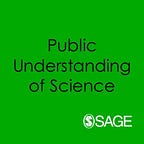BOOK REVIEW
The Modern Myths: Adventures in the Machinery of the Popular Imagination
Review by Declan Fahy
Ball is an exceptional writer and researcher, but with this and his other books, he demonstrates that there is an audience and appetite, beyond the field’s confines, for works that tell sophisticated stories about science and society.
The book jacket of The Modern Myths calls Philip Ball a “brilliant science communicator”, and in this case the promotional rhetoric is apt. The English writer has authored some two dozen science books that range across and between topics and genres, united by a view that science must be understood as an inextricable part of modern culture and society.
Among other examples, The Ingredients: A Guided Tour of the Elements (2002) demonstrates his talent for lucid explanation, especially about chemistry, the subject of his undergraduate degree. Serving the Reich: The Struggle for the Soul of Physics Under Hitler (2013) presents a complex historical analysis of the relationship between politics and physics, the scientific field in which he earned his doctoral degree. Critical Mass: How One Thing Leads to Another (2004) explores how concepts from physics and statistics have been used to provide scientific explanations for social phenomena.
Ball’s versatility and prolific output make him difficult to categorise, as he continually moves between the explanatory mode of popular science and the analytical mode of subject-focused scholarship, all while achieving stable critical regard. In 2021 alone, he has published The Beauty of Chemistry, reviewed in this journal, The Elements: A Visual History of Their Discovery, and The Modern Myths. (A former editor at Nature, he is also a productive journalist and public speaker.) With this vast range and impressive record, he occupies an important cultural space in the public communication of science. His work, moreover, is instructive for scholars in the field because of its scope and its critical approach.
The Modern Myths is positioned in one such important cultural space, the fertile boundary zone between popular science and expert scholarship. It argues that certain stories are enduringly powerful because they help us make sense of the cultural anxieties, philosophical dilemmas, and social upheavals particular to our industrialised societies. These narratives are not the tales of classic myth featuring Medea or Midas, but are stories created mainly from the 19th century onwards in the West that address the obsessions of modernity, including fears and uncertainties over the social impacts of science and technology.
Combining literary analysis and cultural history, Ball analyses seven stories he has identified as emblematic modern myths: Robinson Crusoe (1719), Frankenstein (1818), The Strange Case of Dr. Jekyll and Mr. Hyde (1886), Dracula (1897), The War of the Worlds (1897), the Sherlock Holmes stories (1887–1927), and the Batman tales (1939 –). These stories populate our shared cultural imagination with their resonant scenarios and symbolic protagonists.
For Ball, the exemplar of the modern myth is Frankenstein. He distills Mary Shelley’s 1818 novel to its central myth: “An obsessive scientist creates a living being, usurping the role of God or nature. But what he creates will eventually destroy him”. That myth has been retold and imagined anew over and over again since its first publication, demonstrating its value as a rich source material for subsequent storytelling in different media. Versions of the myth, Ball writes, can be seen, for example, in the films Metropolis (1927) and Blade Runner (1982).
The book’s approach and method will be familiar to researchers who examine artistic representations to determine the cultural meanings of science. It is an insightful contribution to this research tradition, fitting alongside other well-regarded works, such as Jon Turney’s Frankenstein’s Footsteps (1998), Spencer Weart’s Nuclear Fear (1988), and Roslynn Haynes’s From Faust to Strangelove: Representations of the Scientist in Western Literature (1994).
Yet for other reasons the book is instructive to science communication researchers. Ball is an exceptional writer and researcher, but with this and his other books, he demonstrates that there is an audience and appetite, beyond the field’s confines, for works that tell sophisticated stories about science and society. The book also affirms the value of the humanities for understanding the field’s central problems. There are volumes of work that apply social science methods to determine public attitudes to science, but, as Ball shows, the stories he has identified as myths and examined through literary methods are narratives that are “deeply embedded in cultural discourse and readily mobilised, with no need to elaborate, for rhetorical and allegorical purposes”.
These stories constitute the deep strata of a culture, giving form and substance to public perceptions of science, a seam that researchers can continue to mine in order to excavate the cultural meanings of science. Moreover, the book can inspire lines of research. In one of the book’s closing chapters, for example, Ball argues that there will be a need to identify and understand novel myths likely to arise in response to contemporary anxieties.
The prevalence of zombie films and TV programmes with their blasted landscapes and food-seeking hordes, are perhaps soon-to-be mythical stories, expressing fears of climate or pandemic-induced collapse of civilisation. Mythic narratives, Ball argues, can help societies confront and make sense of these and other ultramodern dilemmas because they offer, at their core, “stories that are good for thinking with”.
Declan Fahy is an Associate Professor at the School of Communications, Dublin City University, Ireland. He is the author of The New Celebrity Scientists: Out of the Lab and Into the Limelight (2015).
